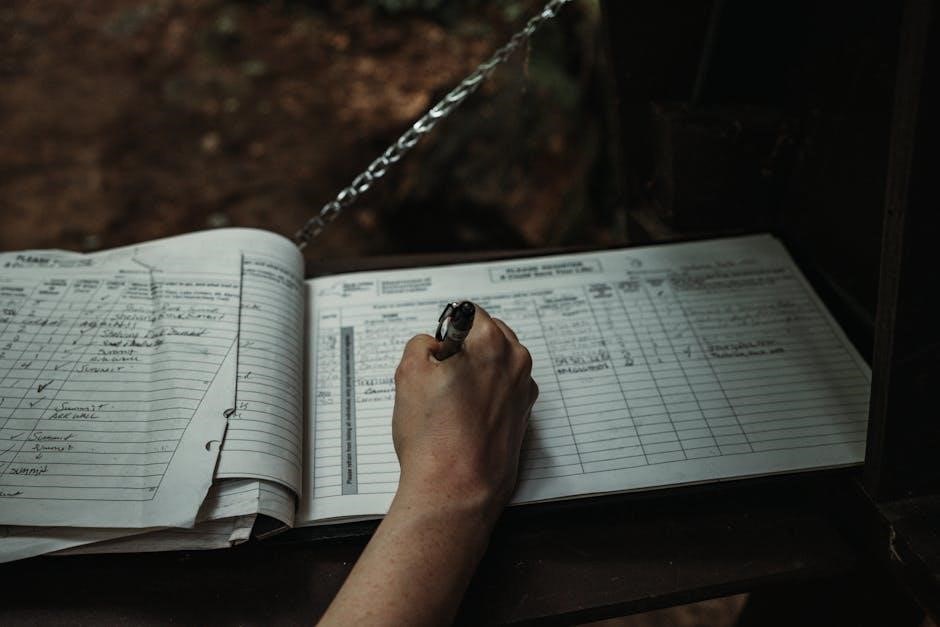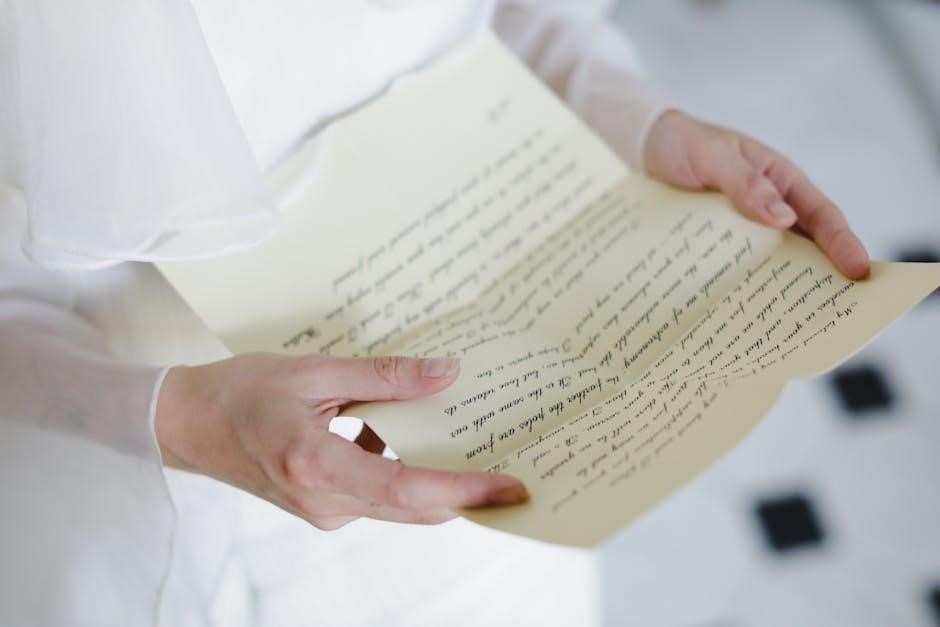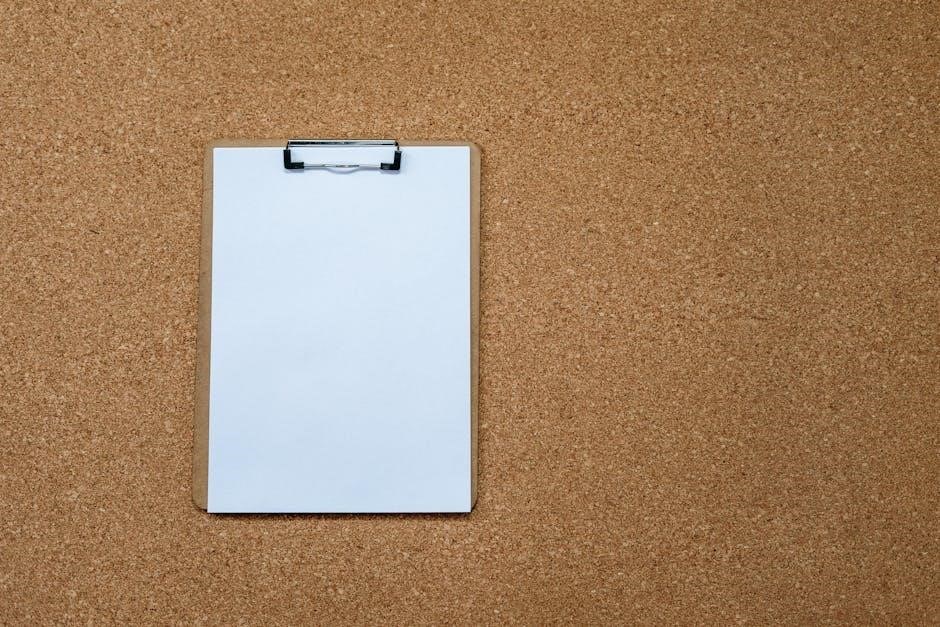Occupational therapy uses SOAP notes for documentation, enabling therapists to track patient progress and create effective treatment plans with
clear guidelines
and standard terminology for accurate reporting always․
Importance of SOAP Notes
SOAP notes play a crucial role in occupational therapy as they provide a standardized method of documenting patient information, allowing therapists to track progress and communicate effectively with other healthcare professionals․ The use of SOAP notes enables therapists to maintain accurate and up-to-date records, which is essential for providing high-quality patient care․ By using SOAP notes, therapists can also identify areas where patients may require additional support or modified treatment plans, ultimately leading to better health outcomes․ Furthermore, SOAP notes help to reduce errors and improve communication among healthcare teams, ensuring that patients receive consistent and coordinated care․ Overall, the importance of SOAP notes lies in their ability to facilitate effective documentation, communication, and care planning in occupational therapy settings, making them an essential tool for therapists to deliver high-quality patient care and achieve desired outcomes․ With proper use, SOAP notes can greatly enhance the quality of care provided to patients․

Structure of a SOAP Note
SOAP notes consist of four main sections, including Subjective, Objective, Assessment, and Plan, providing a clear framework for documenting patient information and treatment plans always using standard terminology․
Components of a SOAP Note
The components of a SOAP note are essential for effective documentation in occupational therapy, including the subjective section which details patient-reported information, the objective section which outlines observable data, the assessment section which provides an analysis of the patient’s condition, and the plan section which outlines the treatment plan and goals․
The subjective section includes patient statements, feelings, and concerns, while the objective section includes measurable data such as test results and observations․
The assessment section provides a summary of the patient’s condition and identifies any problems or areas for improvement․
The plan section outlines the specific interventions and strategies to be used to address the patient’s needs and achieve the desired outcomes, and is used to guide the occupational therapy process․
Each component is crucial for creating a comprehensive and effective SOAP note, and for providing high-quality patient care․
By including all relevant information, occupational therapists can ensure that their SOAP notes are accurate, complete, and useful for guiding treatment and improving patient outcomes․
The components of a SOAP note work together to provide a clear and comprehensive picture of the patient’s condition and treatment plan․
Writing Effective SOAP Notes
Therapists use clear language and concise formatting to create effective SOAP notes with
standardized terminology
for accurate reporting always․
Clear and Concise Language
Using clear and concise language is essential when writing SOAP notes in occupational therapy, as it enables therapists to effectively communicate patient information and treatment plans․
This involves avoiding ambiguous terminology and focusing on providing factual information, which helps to prevent misunderstandings and ensures that all healthcare professionals involved in the patient’s care are well-informed․
Clear language also facilitates the development of personalized treatment plans, as it allows therapists to accurately document patient progress and identify areas for improvement․
Additionally, concise language helps to streamline the documentation process, saving therapists time and reducing the risk of errors․
By using clear and concise language, occupational therapists can create high-quality SOAP notes that support optimal patient care and outcomes․
Overall, the use of clear and concise language is a critical component of effective SOAP note writing in occupational therapy․

Best Practices for SOAP Note Documentation
Therapists should follow established guidelines and standards for SOAP note documentation, using
accurate and consistent terminology always․
Objectivity and Thoroughness in Documentation
Objectivity and thoroughness are crucial elements in SOAP note documentation, allowing therapists to provide accurate and unbiased information about patient progress and treatment plans․
By maintaining objectivity, therapists can ensure that their documentation is based on factual information, rather than personal opinions or biases․
This helps to promote consistency and reliability in the documentation process, which is essential for effective communication and collaboration among healthcare professionals․
Thoroughness is also vital, as it enables therapists to capture all relevant information about the patient’s situation, progress, and treatment plan․
This includes documenting any changes or updates to the treatment plan, as well as any notable achievements or challenges experienced by the patient;
By combining objectivity and thoroughness, therapists can create comprehensive and accurate SOAP notes that support high-quality patient care and promote positive outcomes․
Effective documentation is a critical aspect of occupational therapy practice, and therapists must strive to maintain the highest standards of objectivity and thoroughness in their SOAP note documentation․

Resources for Writing SOAP Notes
Therapists can access various online templates and software, such as SimplePractice, to support SOAP note writing and documentation with easily accessible tools always available online․
SOAP Note Templates and Software
Occupational therapists can utilize various SOAP note templates and software to streamline their documentation process, such as SimplePractice, which offers a range of features to support efficient note-taking and client management․ These templates and software often include pre-designed forms and fields to guide therapists in collecting and organizing relevant information․ With the use of SOAP note templates and software, therapists can reduce the time spent on documentation and focus more on patient care․ Many of these tools also offer the ability to customize templates to meet the specific needs of a therapist’s practice․ Additionally, some software solutions provide features such as automatic billing and insurance claims, making it easier for therapists to manage their practice․ By leveraging these resources, occupational therapists can improve the quality and consistency of their SOAP notes, ultimately enhancing patient care and outcomes․ Overall, SOAP note templates and software are essential tools for occupational therapists․

Example of a SOAP Note in Occupational Therapy
An example of a SOAP note in occupational therapy might include a patient who is receiving therapy to improve their daily living skills․ The note would begin with the patient’s subjective report of their experiences and feelings, followed by an objective assessment of their abilities and limitations․ The assessment section would include observations of the patient’s performance during therapy sessions, as well as any relevant measurements or test results․ The plan section would outline the therapist’s goals and interventions for the patient, including any modifications to their treatment plan․ This example illustrates how a SOAP note can be used to document a patient’s progress and guide their treatment in occupational therapy․ By using a SOAP note format, therapists can ensure that their documentation is clear, concise, and effective in communicating patient information․ The use of SOAP notes in occupational therapy is essential for providing high-quality patient care․ Occupational therapy SOAP notes are used to track patient progress and treatment outcomes․
